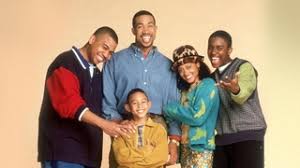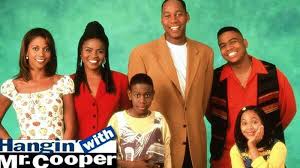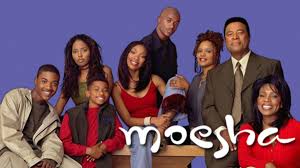
Terry McMillan came on the literary scene in 1987 with her first novel Mama, however it was not until she published her third novel Waiting to Exhale in 1992 that she received fame and fortune. Waiting to Exhale told the story of four professional, middle class black women and their experiences with love. Readers experienced each character’s loneliness, destruction, happiness, sadness, sexual desires, and frustrations with black men; things that readers, especially female readers, could relate to.

While some argued the novel represented a negative view of the black woman and her relationship with black men, the novel spent months on the New York Times Bestseller list and went on to sell over three million copies, and a film adaptation was released in 1995 that featured Whitney Houston. Author and professor Daphe A. Brooks says of the novel: It marked a watershed moment in American culture as it announced and contributed to a shift in Black popular cultural consciousness and production during the last decade of the twentieth century. Advantageously positioned in the aftermath of the Clarence Thomas/Anita Hill Senate hearings, Exhale dramatically extended and popularized for mass consumption the politics of a particular kind of heterosexual, Black middle-class conflict and desire.[i]
McMillan’s novel Waiting to Exhale not only depicted a demographic, middle-class black women, of people not regularly seen in literature, but she also shed light on the complexities of relationships.
McMillan is credited for jumpstarting the African American fiction movement with Waiting to Exhale, and throughout the decade she went on to write more novels that gave glimpses of black love and published one of her most popular novels How Stella Got Her Groove Back in 1996; in 1998, the film adaptation featuring Angela Bassett and Taye Diggs was released. The novel told the story of Stella and her relationship with Winston, a man considerably younger than her. Winston taught Stella to embrace life and eventually his love because she married him. The novel mirrored McMillan’s experience with then husband, Jonathan Plummer.
How Stella Got Her Groove Back is another novel that sets McMillan apart because she reveals the questions, concerns, hopes, and fears of dating someone younger. Stella (and McMillan) has to deal with the thrills and drama that comes along with dating someone younger and at a different stage in life. Likewise, Terry McMillan’s novels did not only deal with love in terms of black men and black women, a few of her works also introduced black’s complex relationship with homosexuals. She weaves in political and social concerns in the black community, such as the understanding (or misunderstanding) of HIV/AIDS and the negative stigma of being black and gay.

Consequently it is of no surprise that another author would emerge and hit the issue of being black and gay head on instead of touching on the subject as McMillan does. Author E. Lynn Harris filled this role and shocked the world with his tales of black men on the DL and carrying on relationships with women. Harris’ novel Invisible Life (1991) told the story of Raymond Tyler struggling with his identity as a bisexual black man. In the novel, Tyler was torn between his married boyfriend and girlfriend. Although readers were stunned by the then-taboo topic, the novel went on to sell millions of copies. Harris’ novels speak to an audience that was largely ignored by authors. All of his books reached the New York Times bestseller list and he is one of the most successful black authors. He was even referred to as the male Terry McMillan.

Some were surprised by Harris’ success because the black community does not readily accept or discuss homosexuality. In an interview with Publisher’s Weekly, Harris says, “I feel like my readers get that I’m writing from the heart, and that resonates with a lot of people in the black community, women especially. Even though the character might be a gay man, they can connect with him emotionally. They can relate to being in hurtful relationships, and because they get that, it doesn’t matter if it’s a gay or a straight relationship” (2003). [ii] Even though homosexuality in the 90s was a taboo subject, readers could relate to Harris’ works. He spoke for and told stories for those who could not speak for themselves during that time.
Both authors captured readers by representing and telling stories that black women and men craved, and they provided literature for black middle-class Americans, a largely underrepresented group before the 90s. McMillan and Harris used personal experiences and turned them into fiction in order to reach and possibly help a multitude of people. Without their persistence in creating stories that people could relate to, who knows what black fiction would look like now. —B. Stewart
[i] Brooks, Daphe A. “”It’s Not Right But It’s Okay”” Taylor & Francis Online. Souls: A Critical Journal of Black Politics, Culture, and Society. 2 Feb. 2011. Web. 16 Nov. 2015.
[ii] Millard, Elizabeth. “Writing to Find Some Kind of Peace of Mind.” PublishersWeekly.com. N.p., 16 June 2003. Web. 21 Nov. 2015.







 Beloved. The Pulitzer Prize winning novel by Toni Morrison, inspired by runaway slave Margaret Garner, tells the story of Sethe, a runaway slave that kills her daughter to save her from being taken into slavery. Years after Sethe pays the price for her crime, a mysterious girl, Beloved, comes to stay with Sethe, her daughter Denver, and her lover Paul D. Upon Beloved’s arrival, her new family feels content and for the first time, happy. Yet, as Beloved’s stay is extended, Denver and Paul D suspect that she is not who she appears to be and for Sethe, Beloved forces her to reconcile her past in order to survive the present.
Beloved. The Pulitzer Prize winning novel by Toni Morrison, inspired by runaway slave Margaret Garner, tells the story of Sethe, a runaway slave that kills her daughter to save her from being taken into slavery. Years after Sethe pays the price for her crime, a mysterious girl, Beloved, comes to stay with Sethe, her daughter Denver, and her lover Paul D. Upon Beloved’s arrival, her new family feels content and for the first time, happy. Yet, as Beloved’s stay is extended, Denver and Paul D suspect that she is not who she appears to be and for Sethe, Beloved forces her to reconcile her past in order to survive the present.







